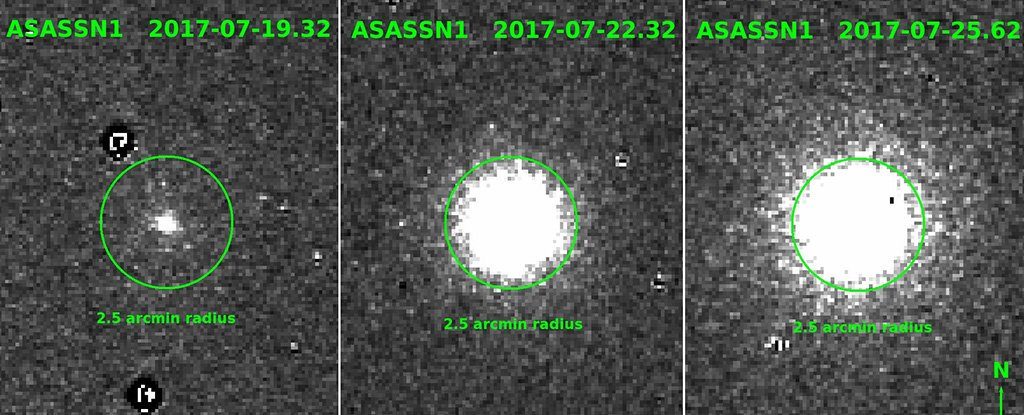
© ASAS-SN/Twitter
There are countless chunks of icy debris swirling around the Oort cloud on the outskirts of the Solar System. But it's always exciting when one of those comes in our direction for a rare flyby.
In July, astronomers discovered a brand new comet zooming through the inner regions of our space bubble.
Since that time it's been steadily getting brighter, and now is about the best time to finally catch a glimpse of it in the night sky.The comet C/2017 O1 ASAS-SN was first detected on 19 July by the
All-Sky Automated Survey for Supernovae, the same system that brought us new discoveries
about the mysterious Tabby's star, massive
space explosions, and stars
shredded by black holes.
Now, for the first time, the survey has discovered a comet which Northern Hemisphere stargazers can readily spot in the sky with the help of a backyard telescope or even just binoculars.
Comet O1 ASAS-SN is
a long-period comet, and it probably takes at least several thousand years to cruise around the Sun and come back - so being able to spot it right now is a wonderful treat.
When it was first found in July, the comet only clocked in a faint apparent magnitude of +15.3, which would make it barely visible even on a large telescope. (For comparison, the full Moon has an apparent magnitude of -13.)
But since then it's been massively growing in brightness, unexpectedly jumping to a magnitude of +10 within just a few days and with no explanation.As it climbs higher in the sky, the comet is expected to top out at around a magnitude of +8, which is
still too faint to see with the naked eye, but with decent-sized binoculars you have a solid chance.
O1 ASAS-SN has traversed several constellations since first being sighted in Cetus. For the aficionados, it's passed by Eridanus, then right through Taurus between the Hyades and Pleiades (or Seven Sisters), and has now crossed into Perseus.
To find it in the night sky, make sure you go out on a night without the Moon and stay as far away from light pollution as possible, keeping in mind the comet's
perihelion is on 14 October. Look towards Perseus while making sure
to consult this sky map for a precise location.
What you can expect to see is a fuzzy blob which remains blurry even as you focus on it. You may even be able to detect a faint green glow, caused by light
emitted from cyanogen and diatomic carbon.
Astronomer Damian Peach recently tweeted this photo, in which the green glow of the comet shows up remarkably well:
And if you can't drag yourself out of bed, or are not lucky enough to be in the correct hemisphere for this celestial wonder (like us here at ScienceAlert), here's another, closer look:
Ah, almost as good as the real deal.

You don't think it all just disappears, do you? Just because it is not reported in the Daily Mail? We can see nothing from Earth....